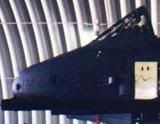| It is currently 29 Jun 2025, 14:43 |
|
All times are UTC [ DST ] |
 
|
Page 1 of 2 |
[ 33 posts ] | Go to page 1, 2 Next |
|
| Author | Message | ||||||
|---|---|---|---|---|---|---|---|
| cover72 |
|
||||||
Joined: 02 Dec 2010, 14:17 Posts: 44 Location: LKPR/Prague, Czech Republic, Central Europe Career field: A-10 Enthusiast |
|
||||||
| Top | |
||||||
| jackb |
|
|||||
Joined: 16 May 2004, 12:44 Posts: 1517 Location: DMAFB, AZ Career field: Crew Chief |
|
|||||
| Top | |
|||||
| cover72 |
|
||||||
Joined: 02 Dec 2010, 14:17 Posts: 44 Location: LKPR/Prague, Czech Republic, Central Europe Career field: A-10 Enthusiast |
|
||||||
| Top | |
||||||
| Dice-man |
|
|||||
Joined: 27 May 2002, 13:12 Posts: 5068 Location: Hill AFB UT |
|
|||||
| Top | |
|||||
| sgtgoose1 |
|
|||||
Joined: 27 Jan 2002, 14:02 Posts: 6162 Location: IL |
|
|||||
| Top | |
|||||
| cover72 |
|
||||||
Joined: 02 Dec 2010, 14:17 Posts: 44 Location: LKPR/Prague, Czech Republic, Central Europe Career field: A-10 Enthusiast |
|
||||||
| Top | |
||||||
| jackb |
|
|||||
Joined: 16 May 2004, 12:44 Posts: 1517 Location: DMAFB, AZ Career field: Crew Chief |
|
|||||
| Top | |
|||||
| Old Chief |
|
|||
|
Joined: 15 Oct 2004, 06:52 Posts: 813 |
|
|||
| Top | |
|||
| cover72 |
|
||||||
Joined: 02 Dec 2010, 14:17 Posts: 44 Location: LKPR/Prague, Czech Republic, Central Europe Career field: A-10 Enthusiast |
|
||||||
| Top | |
||||||
| prkiii |
|
|||||
Joined: 17 Jun 2002, 09:37 Posts: 1630 Location: Warner Robins, Ga |
|
|||||
| Top | |
|||||
| jackb |
|
|||||
Joined: 16 May 2004, 12:44 Posts: 1517 Location: DMAFB, AZ Career field: Crew Chief |
|
|||||
| Top | |
|||||
| sgtgoose1 |
|
|||||
Joined: 27 Jan 2002, 14:02 Posts: 6162 Location: IL |
|
|||||
| Top | |
|||||
| Ice Pirate |
|
||||
Joined: 07 Dec 2004, 16:08 Posts: 1050 Location: Aurora CO |
|
||||
| Top | |
||||
| cover72 |
|
||||||
Joined: 02 Dec 2010, 14:17 Posts: 44 Location: LKPR/Prague, Czech Republic, Central Europe Career field: A-10 Enthusiast |
|
||||||
| Top | |
||||||
| jackb |
|
|||||
Joined: 16 May 2004, 12:44 Posts: 1517 Location: DMAFB, AZ Career field: Crew Chief |
|
|||||
| Top | |
|||||
| cover72 |
|
||||||
Joined: 02 Dec 2010, 14:17 Posts: 44 Location: LKPR/Prague, Czech Republic, Central Europe Career field: A-10 Enthusiast |
|
||||||
| Top | |
||||||
| sgtgoose1 |
|
|||||
Joined: 27 Jan 2002, 14:02 Posts: 6162 Location: IL |
|
|||||
| Top | |
|||||
| cover72 |
|
||||||
Joined: 02 Dec 2010, 14:17 Posts: 44 Location: LKPR/Prague, Czech Republic, Central Europe Career field: A-10 Enthusiast |
|
||||||
| Top | |
||||||
| sgtgoose1 |
|
|||||
Joined: 27 Jan 2002, 14:02 Posts: 6162 Location: IL |
|
|||||
| Top | |
|||||
| Hawg166 |
|
|||||
Joined: 27 May 2003, 18:48 Posts: 2449 Location: Still fighting the indians in Western Massachusetts |
|
|||||
| Top | |
|||||
| Coach |
|
||||
Joined: 27 Oct 2002, 00:46 Posts: 952 Location: NAS Norfolk VA |
|
||||
| Top | |
||||
| Weasel Keeper |
|
||||
|
Joined: 03 Aug 2008, 21:55 Posts: 312 Location: Ft Wayne, IN, USA |
|
||||
| Top | |
||||
| jackb |
|
|||||
Joined: 16 May 2004, 12:44 Posts: 1517 Location: DMAFB, AZ Career field: Crew Chief |
|
|||||
| Top | |
|||||
| jackb |
|
|||||
Joined: 16 May 2004, 12:44 Posts: 1517 Location: DMAFB, AZ Career field: Crew Chief |
|
|||||
| Top | |
|||||
| Weasel Keeper |
|
||||
|
Joined: 03 Aug 2008, 21:55 Posts: 312 Location: Ft Wayne, IN, USA |
|
||||
| Top | |
||||
 
|
Page 1 of 2 |
[ 33 posts ] | Go to page 1, 2 Next |
|
All times are UTC [ DST ] |
Who is online |
Users browsing this forum: No registered users and 1 guest |
| You cannot post new topics in this forum You cannot reply to topics in this forum You cannot edit your posts in this forum You cannot delete your posts in this forum You cannot post attachments in this forum |






